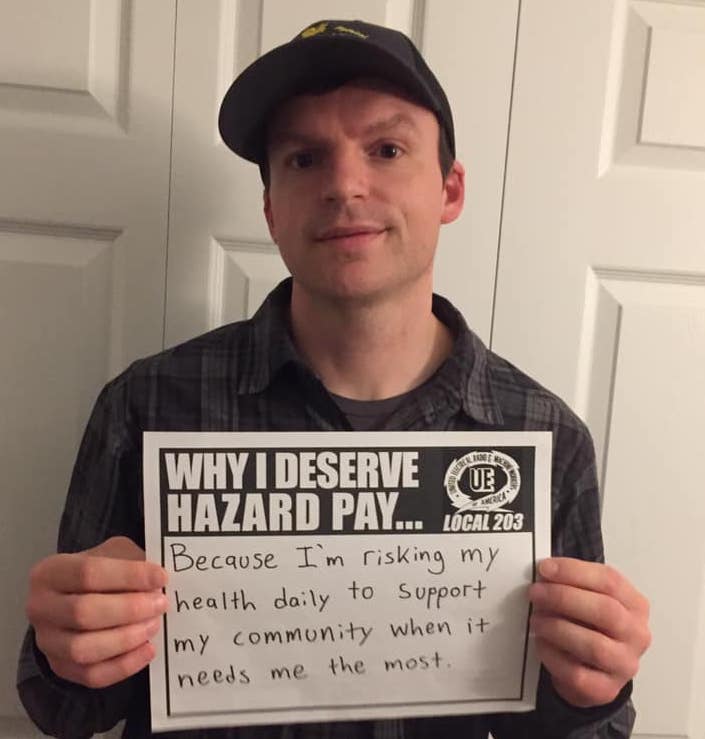Do you and your coworkers need more protection or hazard pay? Should your workplace be shut down in order to protect employees? You can take action with your coworkers to make these changes. Here are five steps to winning workplace fights during a pandemic:
1. Talk with your coworkers

If you can still communicate face to face with co-workers, collect their names and phone numbers through a petition or by passing around a contact form like this.
Figure out the best way to keep people connected. Are there existing ways people communicate already? Is there a Facebook group that people already use, are there text groups or do workers use WhatsApp to communicate? If there is an emergency contact list your employer maintains? If so, get a copy.
2. Form a group with your co-workers

Identify workers from as many areas and shifts as possible and start to discuss what changes you want to see first. If you are unable to meet in person this can happen over a conference call or a Zoom meeting. We can help you set this up, and see tips for these tools here.
3. Identify a set of demands

What are the most immediate and pressing issues facing you and your coworkers? Identify what demands you can make of your employer to keep people safe and ensure that workers are taken care of. Good demands are things that a lot of your co-workers can agree on and relate to. Think about including some broader demands that may impact the general public as well.
Are you still working? Are you designated as an essential employee? If so, are you being forced to work without protective equipment? Is your employer providing masks and gloves, are they cleaning or disinfecting the workplace? Is your employer modifying the work so you maintain social distancing to limit your exposure and protect yourself and your family? Are you getting hazard pay? Should you be working or should they send you home with pay? Are they putting the public at risk by risking your safety?
Are you laid off because of Covid 19? If so, are you being compensated? Has your boss canceled your insurance? Are they taking advantage of public money to keep you on the payroll or just forcing you to fend for yourself? See a list of potential demands here.
4. Present your demands using a petition or letter

One effective way to present your demands is through a petition or letter signed by a large group – preferably a majority – of your co-workers. You can see a sample demand letter here. Remember: you have the right to talk about these issues at work and to ask co-workers to sign the letter/petition at non–work times and in non-work areas. Read more about your rights here.
Once workers have signed your letter, it’s time to deliver it to your boss. You will want to do this as a group, and you’ll need to choose a couple of spokespeople. Try to pick individuals who have the trust and respect of their co-workers, are representative of the broader workforce, and will advance the interest of the group and not just their own. Make the demands clear and give the employer a deadline to respond.
5. Take action to win your demands

If your employer refuses to agree to your demands, you have options. You can go public with your demands and pressure them to comply. You can raise your concerns with customers or suppliers. You can also withhold your labor and refuse to take an unsafe assignment until the employer agrees to shut down, or implement changes that will ensure workers are safe at work. You can organize a total work stoppage or strike. You can read about your rights to take these actions here.
If you can, you should speak with an experienced organizer who can help you plan how to take these steps and win your demands. You can contact us here and we can help.
Are you ready to take action to protect yourself and your co-workers? We can help. Contact us today!
